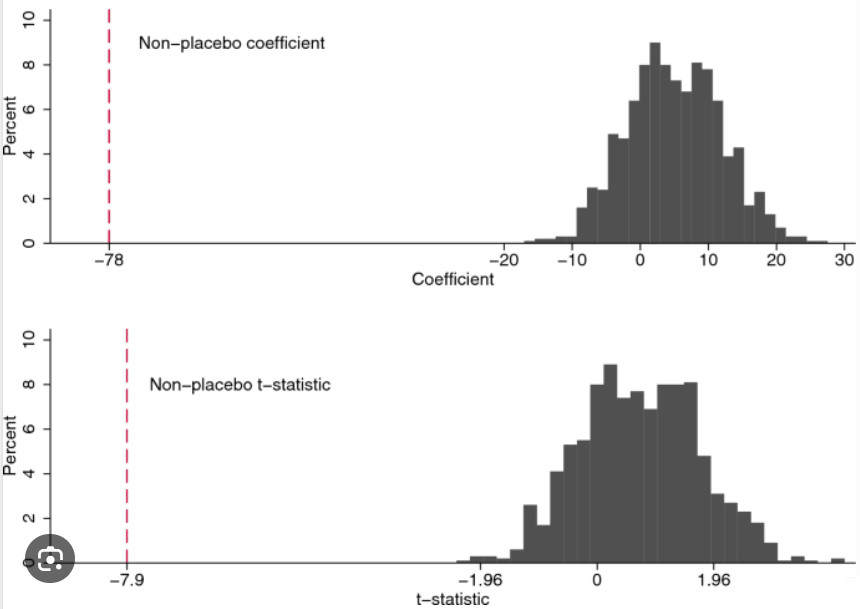[RH] тъИАэ ыГэть тььАьБ эыНть ъДъГ
By Jingnan Chen, ENVIRONMENTAL AND RESOURCE ECONOMICS, August 30, 2023
тэъВНъГМ ьь ъВНь э(Environmental and Resource Economics)т ь ыь ыАэы ьыЁьД ьАъЕЌь ыАыЅДыЉД, ьь
эьЅь ьЈыь ьЕыъА ъДыІЌыьДы, ыЈъБАьД ы ьЈы ы
Иыьь ььАьБь ъАььэЈыЄы ъВАыЁ ь ыДы ИыЄ.
ьъЕь ььэА ыэъЕ(University of Exeter)ъА ьЃМыэ ьД ьАъЕЌы ьЄъЕь ьВЈыЈъИАь ъГЕьЅьь ьИыЖ ьЈыь ы
Иыьь ььАьБь ьДь ь ыЇьЖьыЄ.
ьД ьАъЕЌыЅМ эЕэД, ъГЕьЅ ыДыЖь ьЈыь ьЕыъА ъДыІЌыыЄ эыыМы, ьИыЖ ьЈыъА 1ы ьІъАэ ы эъЗ ь ьМыЁ ььАьБьД 0.83% эыНэыЄы ьЌьЄьД ыАъВЌыьыЄ.
ыэ, ьАъЕЌэь ьыЉДь ьэЅь ыМьЙ ь ьы ьДыьМъА ььАьБь ьМыЖ эыНь ъАь ИьЈыЄы ь ы ыАъВЌэыЄ.
эЕьЌь ыЎ ьъАь ыьъА ьыэ ыАЄьы ыЖъЕЌэъГ ььАьБь ьэЅь ьЄыЄы ьЌьЄьДыЄ!
ьД эььД ь ыАьэыьЇы ыЊ
ээьЇ ьыЄ.
эьЇыЇ ьАъЕЌэь ьД ьАъЕЌ ъВАъГМъА ь ьАЈь ьМыЁ ьЄыЅДъГ ьы ь ьИъГь ъИАьЈь ь ьэДьМ эы ь ыЖь ъИАь
ьД ьЃМьыЅМ ъИАьИьЌьМ э ьДьМъИАыМъГ ыЇэыЄ.
ьМыАь ьМыЁ ьАыІЌы ъИАэ ыГэь ыэД ъБАьь ъЗыЊЈь ьэЅы Ѕь ыэД ьъАэыЄ.
эьЇыЇ ьДыЌэ ъИАэ ыГэъА ъАьИыЄьъВы ыЏИьЙы ьэЅь ыэДьы эДьМ эыЄ.
ьДь ьАъЕЌыЅМ эЕэД, ыЈъБАьД ьЈы ьЁАъБД эь ьМьИьь ьМэъБАы ьЈы ьЕы ъДыІЌъА ыьЇ ьь ъБДыЌМьь ьМэ ы ььАьБьД эыНэыЄы ъВь ьДыЏИ ьъГ ьы ьЌьЄьДыЄ. ьДы ыЙьАэ ьМьДыЄ!
эьЇыЇ ьыЁьД ьАъЕЌы ыЈъБАьД ъИАьЈ эььы ьЈыь ьЕыъА ъДыІЌы ъГГьььЁАьАЈ ььАьБьД эыНэыЄы ь ь ыГДьЌьЄЌыЄ.
ьД ьыЁьД ьАъЕЌ ъВАъГМы ьЈы ъДыІЌ ъБДыЌМъГМ ъАь ъИАь ьД ъИАэ ыГэь ьэЅь ьэььМьЄ ъВьДыМъГ ьъАэ ь ьБ
ъВАь ьыЄъГМ ъИАь
ыІЌыыЄьъВ ъИАэ ыГэь ь ьЌь ьИ ъВНь ь ьэЅы Ѕь ыэД ыЄь ьъАэДыДьМ э ьІъБАыЅМ ь ъГЕэыЄ.
ьІ, ъБДыЌМ ыД ьЈы ъДыІЌыЅМ эы ъВыЇьМыЁы ыь ьИыЖ ьЈыь ьэЅь ьээы ыА ьЖЉыЖэьЇ ьыЄ.
ьД ьАъЕЌы ьМьМ ьЕъГ ьЕъЕЌ(wet bulb) ьЈы ыАьДэАыЅМ ьЌьЉэъГ , ьДы ьДъГМ ьЕыыЅМ ыЊЈы ъГ ы Єэы ьИЁь ыАЉыВьДыЄ.
ьАъЕЌэь ьДъВь 635ыЊ
ь ыЈы
ы
ИыьыЅМ эЌэЈэы 35,190ыЊ
ь ъЕы ъЗМыЌД ы
ИыьыЄьД ьээы ь
ыЌДь ьъГМ ьЇь ыэ ъАыГ ыАьДэАь ъВАэЉэыЄ.
ьАъЕЌ ыьь эь ь ьЇэь ьэ ьЄыІЌьН ьЈьДэМыЅМ ььАэы ъГЕьЅьДьыЄ.
ьЈьДэМь ьЌьИэ эЙьБьМыЁ ьИэД, ъГЕьЅь эьЇь ыГДьЅэъИА ьэьЌ ыЊЈы ьь
ьЅь ьЈыыЅМ ььЈ 25ы, ьы ьЕыыЅМ 60%ыЁ эы ьМь э ьЈы ьЕы ь ьД ььЄэ
ь ъАьЖъГ ььыЄ.
ьАъЕЌ ъВАъГМыыЁ, ьЈыъА 1ы ььЙэ ы ььАьБьД 0.83% эыНэыЄы ъВь ы
ИыьъА ыЇЄьМ 22.6ьь 33.4ъАь ьЈьДэМыЅМ ы ь ъВ ььАэыЄы ъВь ьыЏИэыЄ.
ыэ ьАъЕЌы ьЈыъА 28ы ьДььИ ъВНьА, ььАьБьД ьМыАь ьИ ы ыГДыЄ 5.8% ы эыНэыЄы ъВы ыАъВЌэыЄ.
- ENVIRONMENTAL AND RESOURCE ECONOMICS, August 30, 2023, тHow Much Will Climate Change Reduce Productivity in a High-Technology Supply Chain? Evidence from Silicon Wafer Manufacturing,т by Jingnan Chen, et al. © 2023 Springe Nature. All rights reserved.
To view or purchase this article, please visit:







